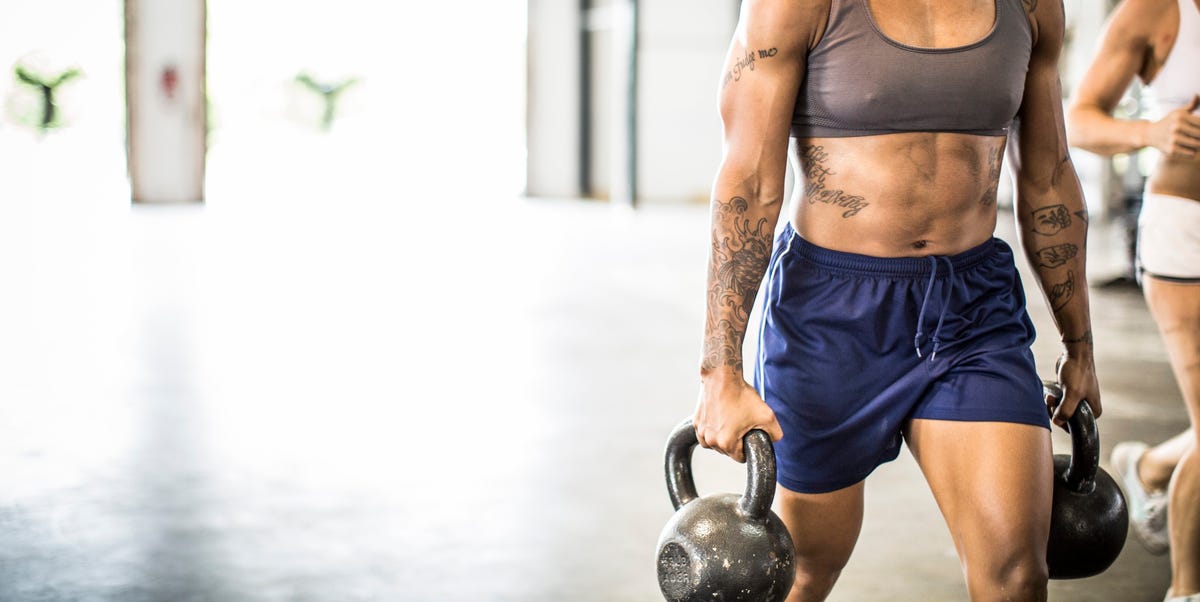Pilates, planks, crunches – all good for building core strength, but not the only options. The suitcase carry exercise may seem as though it has a niche purpose, but the benefits are much further reaching than just helping you heave luggage around on your holidays (though, it’ll certainly come in useful there too). It’s a movement that’s uncomplicated, requiring much less coordination than some other core-specific exercises, and easy to perform pretty much anywhere – plus, it’s a favourite among PTs.
‘The suitcase carry is as simple as it sounds,’ says Daniel Booth, performance coach at MyoLab. ‘Think of carrying a heavy suitcase through an airport. It’s a loaded carry – a category of exercises that build full-body strength and stability – and it’s far tougher than it looks.’
What muscles are used in the suitcase carry
Suitcase carries primarily target the obliques – the muscles that run along each side of your waist – and deep core stabilisers, which stop you from tipping forwards. But that’s not all. ‘Beyond that, your shoulders and traps [the two large muscles in your upper back] keep the load steady, your grip and forearms are tested, and your glutes, hamstrings, and postural muscles work to keep you moving tall and straight,’ explains Booth. Truly, a full-body exercise.
What to Read NextSuitcase carry benefits
The suitcase carry exercise helps you build functional core strength. This, Booth says, differs from six-pack strength – it’s the kind of strength that protects your spine and carries into sport and everyday life making day-to-day movements much easier.
‘Most people train their core by creating movement [crunches, twists]. Suitcase carries flip that: you’re training your core to resist movement,’ Booth explains. ‘Your obliques and stabilisers fire to keep your spine upright against the uneven pull of the load. This builds a stronger, more protective core that supports both athletic performance and injury prevention.
That’s not where the benefits of suitcase carries end, though. According to Booth, they also:
- Improve posture. ‘By resisting lateral tilt, you train neutral alignment under stress.’
- Improve grip strength, which is a marker of health, longevity, and athleticism.
- Improve spinal resilience. Booth describes this as preparing your body to deal with the asymmetry of real-world movement.
- Facilitate performance transfer. ‘From running mechanics to lifting shopping bags, the benefits are practical and immediate.’
How to do the suitcase carry
Booth advises starting with a dumbbell or kettlebell heavy enough to challenge you for 30–40 seconds.
- Stand tall – feet hip-width, chest proud, shoulders back.
- Brace your core – imagine zipping up your ribcage and pelvis.
- Walk slowly – eyes forward, smooth steps, no rushing.
- Stay level – avoid leaning to either side; picture balancing a glass of water on your head.
- Switch sides – repeat with the opposite hand.
‘Suitcase carries are best used as a strength accessory – either early in a session to prime the core, or toward the end as a finisher,’ says Booth. He recommends doing them:
- 2-3 times per week.
- 3-4 sets per side.
- 30-40 seconds of walking, resting 60-90 seconds between sets.
‘They’re quick, low-skill, and high reward. Build them in consistently and you’ll notice your core strength, posture, and resilience improve across everything you do.’
Suitcase carry variations
If you find that suitcase carries are a little too challenging, Booth advises instead starting with a static suitcase hold. ‘Stand tall with the weight in one hand for 20-30 seconds before progressing to walking,’ he says.
To make the exercise more challenging, you can try increasing the weight, extending the walk or attempting a suitcase march instead. ‘Pause briefly on one leg each step for a huge stability challenge,’ Booth says. Eventually, you could experiment with different weight placements, such as holding the weight in a front rack or overhead position instead of down by your side, or incorporating different equipment, like a hex bar.
Suitcase carry mistakes
Suitcase carries are a widely accessible exercise that the majority of people – including complete beginners – should be able to execute comfortably. There are, however, three main mistakes to avoid, according to Booth:
- Over leaning to compensate for the load. ‘You want to achieve a steady, stable core without over leaning one way or the other.’
- Not engaging your core appropriately.
- Speed over precision. ‘Focus on a controlled walk tempo, don’t be tempted to speed through it as you’ll lose all rigidity in the core area.’
Abbi Henderson is a freelance journalist and social media lead who covers health, fitness, women’s sport and lifestyle for titles including Women’s Health, Stylist and Marie Claire.
Before settling in a British seaside town, she spent a couple of years living in Canada, where she contributed to publications such as Best Health, Foodism and Canadian Living, and discovered she is, in fact, a little outdoorsy.
With a desire to help make healthcare, exercise and sport more accessible to women, she writes about everything from the realities of seeking medical support as a woman to those of being a female athlete fighting for equality.
She has a personal trainer qualification, a couple of medals from her short time in competitive Irish dancing, and an Arsenal Women season ticket. When she’s not in front of a screen working, she enjoys weightlifting, going for walks and stopping for little treats (matchas and pastries), and trying new recipes (that are almost always pasta-based).
